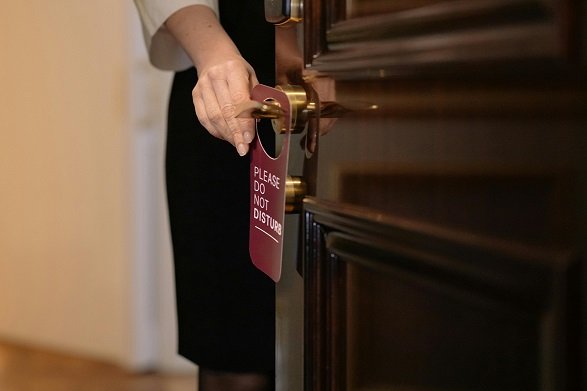What is hotel Revenue Management? Revenue Management (RM) is about selling the right room, to the right customer, at the right price, at the right time, through the right channel.
Part 1 of 3 – Hotel Revenue Management Series.

Let’s dive deeper.
Best Revenue Management Systems (RMS) in 2025
Welcome, aspiring curious minds! If you’re stepping into the dynamic world of hospitality, you’ve often heard the term, “revenue management.” It might sound like belonging to complex financial wizards, reserved for seasoned industry veterans.
But let me tell you, it’s a fundamental concept that every hotelier, from student to seasoned general manager, needs to grasp. Think of it as the secret sauce that helps hotels not just survive, but to compete and make more profit a hyper competitive market.
While the definition is straightforward, in practice, it involves a blend of art and science, strategy and foresight – today with the help of technology. It’s about making smart decisions that maximize a hotel’s income, ensuring every available room contributes its utmost to the bottom line.
Why is this so crucial, especially for those just starting out?

Because in the hotel business, an unsold room tonight is revenue lost forever. Unlike a car or a television, you can’t put a hotel room back on the shelf and sell it tomorrow if it goes empty today. This unique characteristic of “perishable inventory” (so we say room nights are perishable) makes revenue management not just important, but absolutely essential for profitability and sustainability.
In this post, we’ll break down the jargon, explore the core concepts, and fundamental knowledge that you need to understand this vital aspect of hotel operations.
The ABCs of Revenue Management: Core Concepts Explained
Before we dive into strategies, let’s lay down the groundwork because understanding these basic concepts are the building blocks of mastering and effectively handling revenue management.
Perishable Inventory in Hospitality Industry
For example, imagine a seat on an airplane. Once that plane takes off, an empty seat can never be sold again. The same applies to a hotel room. If a room is empty tonight, the potential revenue from that night is gone forever. This is the concept of perishable inventory.

Unlike physical goods that can be stored and sold later, hotel rooms, like airline seats or concert tickets, have a fixed shelf life. This inherent perishability is why dynamic pricing and strategic management are so critical in hospitality. Every night, you have a fresh opportunity to maximize revenue, but also a fresh risk of losing it
Supply and Demand in Hospitality Industry
At its heart, revenue management is a sophisticated dance between supply and demand. It’s a basic economic principle in any industry: when demand is high and supply is limited, prices tend to go up. And, when demand is low, supply is abundant, the prices tend to go down.
For hotels, supply is relatively fixed (the number of physical rooms hotel has), while demand fluctuates wildly based on seasons, events, holidays, local attractions, and even by the day of the week.
A revenue manager’s job is to constantly monitor these forces and adjust pricing and availability to capture the most value.
Willingness to Pay (WTP) OR What Guests Value
Not every guest is willing to pay the same price for the same room. This is where Willingness to Pay (WTP) comes in. Or, what is the the maximum price a particular customer is willing to pay for a product or service.
But there are factors that influence customer WTP:
- How far in advance they book
- The purpose of their trip (business vs. leisure)
- Their loyalty to the brand
- Their perception of your hotel’s value compared to competitors
Understanding WTP of guests with these different factors allows you to offer varied rates and packages,and it ensures that you don’t leave money on the table by charging too little, or lose a booking by charging too much.
What is segmentation in hotels? (Grouping Guests for Smarter Pricing)
Since not all guests are created equal in terms of their WTP, hotels categorize them into different segments. This allows for targeted pricing and marketing strategies. Common segments include:
- Transient Guests: These are individual travelers booking one or a few rooms, often for leisure or individual business trips. They typically book through various channels like Online Travel Agencies (OTAs) or your direct website.
- Group Guests: These are bookings for or more rooms, often associated with conferences, weddings, sports teams, or tours. Group rates are usually negotiated well in advance.
- Contract Guests: This segment includes guests who have a pre-negotiated, long term rate with the hotel, such as airline crews, corporate clients with frequent stays, or extended-stay guests. Their rates are often fixed for a longer period, regardless of daily demand fluctuations.
Note: Hotel can have too many or too little segments based on their operational needs, business type, and the chains their are associated with.
By understanding the unique needs, booking behaviours, and WTP of each segment, hotels can tailor their offerings and pricing to maximize revenue from each group. This is a cornerstone of effective revenue management.
Key Metrics in Revenue Management
In revenue management, numbers tell a story. To understand how your hotel is performing and where you can improve, you need to speak the language of metrics. These key performance indicators (KPIs) act as your compass, guiding your decisions and helping you navigate the complexities of pricing and demand.
Occupancy Rate: How Full is Your Hotel?
This is perhaps the most straightforward metric. The Occupancy Rate tells you the percentage of your available rooms that were sold over a specific period. It’s calculated as:
Occupancy Rate = (Number of Rooms Sold / Number of Available Rooms) x 100%
For example, if you have 100 rooms and sell 75 of them, your occupancy rate is 75 %. While a high occupancy rate is generally good, it doesn’t tell the whole story about profitability. You could be selling many rooms at very low prices because not all rooms are sold at the same standard prices, you might be giving discounts or you might be selling at low rates to a guest who is willing to pay higher price for it.
Average Daily Rate (ADR): What’s the Average Price Per Room?
Average Daily Rate (ADR) measures the average revenue earned per occupied room in a given period. It helps you understand the pricing power of your hotel. It’s calculated as:
ADR = Total Room Revenue / Number of Rooms Sold
If you generated 7,500 from selling 75 rooms, your ADR would be 100. ADR is crucial for assessing your pricing strategy. A high ADR indicates you’re selling rooms at good prices, but at the same time, it doesn’t account for empty rooms because the formulae doesn’t include your unsold rooms anywhere. Here comes Revenue Per Available Room (RevPAR) calculation to rescue the situation.
Try our ADR Calculator Online
Revenue Per Available Room (RevPAR): The Ultimate Performance Indicator
RevPAR (Revenue Per Available Room) is often considered the most important metric in hotel revenue management because it combines both occupancy and average room rate into a single figure. It tells you how much revenue you’re generating per available room, regardless of whether it was occupied or not. It’s calculated in two ways:
RevPAR = Total Room Revenue / Number of Available Rooms
Using our previous example: 7,500 (Total Room Revenue) / 100 (Available Rooms) = 75 RevPAR.
OR
RevPAR = Occupancy Rate (Percentage) X ADR
75% (Occupancy percentage) X 100 (ADR) = 7,500 RevPAR
A higher RevPAR indicates better overall performance, as it means you’re effectively balancing both occupancy and pricing.
Total Revenue Per Available Room (TRevPAR): Looking Beyond Just Rooms
While RevPAR focuses solely on room revenue, TRevPAR (Total Revenue Per Available Room) takes a broader view. It includes all revenue generated by the hotel, not just from rooms, divided by the total number of available rooms. This includes income from food and beverage, spa services, events, parking, and more. It’s calculated as (the calculation is similar to RevPAR):
TRevPAR = Total Hotel Revenue / Number of Available Rooms
This metric is vital for hotels that have significant non-room revenue streams. It helps hoteliers understand the total value generated by each available room, encouraging strategies that maximize all revenue centers, not just accommodation.
Gross Operating Profit Per Available Room (GOPPAR): Understanding Profitability
Taking it a step further, GOPPAR (Gross Operating Profit Per Available Room) is a powerful profitability metric. It measures the gross operating profit generated per available room. Unlike RevPAR or TRevPAR, GOPPAR considers the costs associated with generating revenue. It’s calculated as:
GOPPAR = Gross Operating Profit / Number of Available Rooms
Gross Operating Profit is the revenue remaining after deducting all operating expenses (like labor, utilities, and supplies) but before accounting for fixed costs (like rent or mortgage). GOPPAR gives a clearer picture of the operational efficiency and profitability of your hotel, highlighting how well you’re managing both revenue generation and cost control. It’s a favorite among owners and asset managers for evaluating a hotel’s true financial health.
Mastering these metrics is the first step towards becoming a proficient revenue manager. They provide the data-driven insights needed to make informed decisions and steer your hotel towards greater profitability.
In the next post, we will cover:

